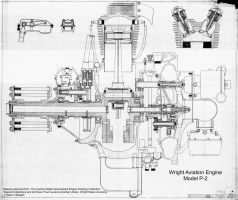
Wright Aviation Engine, Model P-2
(Large Image in the Members' Section)
Wright Aviation Engine, Model P-2 CAD Models
P-2A, P-2B, P-2C
by John Riend
Published 28 Jan 2024; Revised 10 Feb 2025
 Wright Aviation Engine, Model P-2 (Large Image in the Members' Section) |
Ninety-eight years ago, Wright engineers were hard at work on the latest, greatest air-cooled radial engines. The history on “most of” Wright’s early engine progress has been covered by others, but there are still a few stories to be found. In this case, Wright’s work on the models P-1 and P-2 Cyclones that provided the foundational knowledge for large air-cooled radial engines that progressed into the R-1750 and later R-1820 Cyclones. |
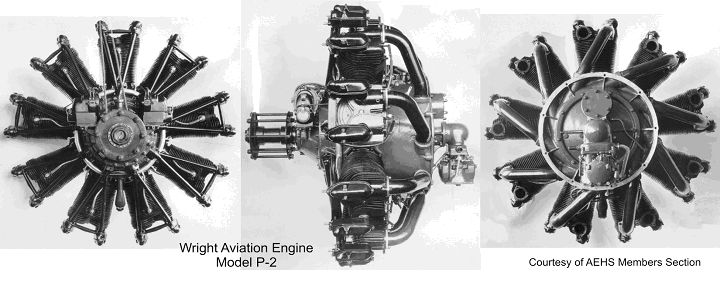 |
25 Jan 2024
Other than basic specifications, there is very little readily-available technical information or drawings for either engine. Some excellent P-1 photographs and test data exist at the National Air and Space Museum (NASM) (1) and a few P-2 photographs are in the AHES (members section) and NASM (1). There are lots of accounts in the aviation literature on the progress of these engines but that is about it.
Over several years of research in the Wright Aeronautical Division (WAD) Engine Drawing Archive, I have complied a collection of drawings on Wright’s early air-cooled radial engines (J Series & others), including many on the P-1 and P-2 engines. Unfortunately, many of the key drawings were either not filmed or are missing (bad microfilm, etc.), which makes it difficult to accurately recreate a 3D model of a complete engine. In the case of the P-2, I was able to find sufficient drawings to create an approximate reconstruction of the P-2 supercharger assembly.
Based on the design similarity between the R-1200 Simoon and the P-2, I decided to take a closer look at modeling the P-2, even though there is no crankcase drawing available. Comparing the two engine’s Bills of Material (BOM) shows they used many of the same components, and focusing on the supercharger assembly, both engines used essentially the same components (with some minor variations). Based on that finding I decided my first project on any of the P-1, P-2 and R-1200 engines would be to build an approximate 3D model of the P-2 supercharger assembly.
The drawings for the P-2 supercharger components are reasonably legible but have a number of dimensional discrepancies that would have been corrected if the engine had gone into production. There was no drawing for the P-2 impeller, but with outline dimensions from the R-1200 impeller and inducer drawing for the P-2 it was easy to reverse engineer an approximation to the P-2 impeller. Something noteworthy here is the terminology being used at the time. Wright and presumably General Electric (who manufactured the unit for them) used the term “supercharger air scoop” for what’s currently called an inducer.
Another item not explicitly covered on the P-2 drawings is a vibration damping coupling used in the propeller reduction gearing (shown below) and supercharger drive gears. There was a P-2 supercharger section drawing stating the gear coupling was made by Allison Engineering. I asked Kim McCutcheon if he would contact his friend at Allison and ask if they had any record of the P-2 coupling project. John Leonard promptly replied with several drawings of spring couplings projects from his plans book Allison Drawings, 1919 - 1943 (2).
 |
Then it was a simple task to track down the patent issued to Norman Gilman at Allison on the spring coupling design (3). Using the few dimensions that I did have, along with the Allison illustrations, I constructed an approximation to what Wright might have used on the P-2 for the spring coupling on their supercharger drive mechanism.
If anyone has any technical information on the Wright P-1, P-2 or R-1200 engines that they would like to share, or has comments or suggestions on my 3D models, please contact me via the AEHS webmaster link at the bottom of this page.
Wright Aviation Engine, Model P-2A
| Connecting Rods | Crankshaft | Piston | Supercharger |
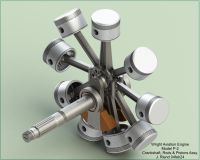 |
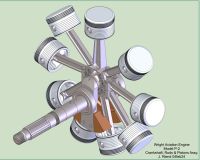 |
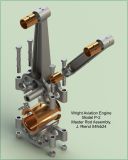 |
| Crankshaft, Master Rod, Articulated Rods, Pistons | Master Rod | |
 |
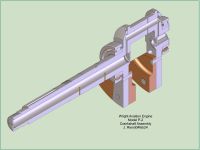 |
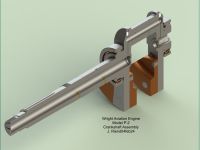 |
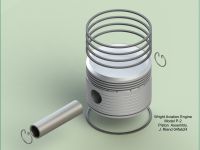 |
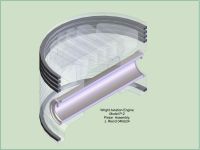 |
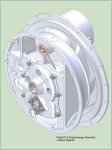 |
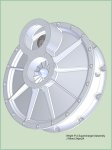 |
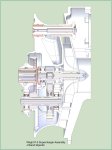 |
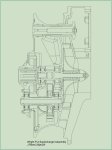 |
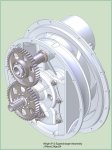 |
| Supercharger Assembly | ||||
 |
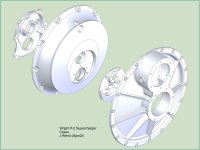 |
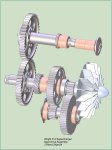 |
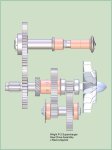 |
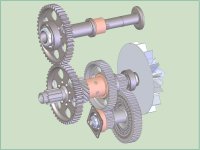 |
| Supercharger Case | Supercharger Gear Drive | |||
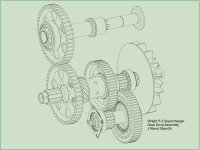 |
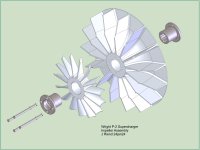 |
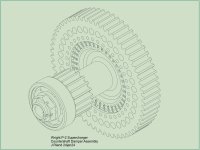 |
||
| Supercharger Gear Drive | Supercharger Impeller Assembly | Countershaft Damper Assembly | ||
08 Feb 2025
Since completing the P-2 supercharger project I continued my research in the WAD Archive and have identified several new (to me) P-2 engine assembly drawings that provided additional Part Numbers (P/Ns). for some of the missing components. These new P/Ns. allowed me to confirm that several components were not filmed and some were on microfilm rolls that deteriorated and were destroyed due to vinegar syndrome. The three P-2 engine assembly drawings (13410, 13450, & 13705) are among the only available documentation that show the progression of the P-2 Cyclone as it evolved into the future R-1750.
Several documents (4, 5, 5a) show that there were 12 P-2 engines built for the Navy and that 2 of them were replaced with an improved P-2 engine equipped with a 2:1 ratio reduction gear.
After being thrust into building air-cooled engines by the Air Corps and Navy, Wright realized air-cooled engines had a promising future in large military and commercial aircraft. Seeing the potential for sales in commercial aviation, Wright devoted much more engineering effort to the development of the P-2 and R-1750. Wright was also motivated because of their top engineering people running off and forming Pratt & Whitney Aircraft to compete against them. The P-2 engine evolved into the R-1750, and was built in three successive revisions as indicated in their respective assembly drawings:
The original P-2 (P-2A) engine, a continuation of the P-1 project, was a scaled-up version of the Whirlwind engine that included an engine driven supercharger designed by GE. It had (Heron designed?) aluminum-bronze cylinder heads with integral cylinder fins and screwed-in flanged liners.
The second revision P-2 (P-2B) had the magnetos and associated drive gears moved aft from mounts on the front crankcase to mounts on the revised main crankcase, a new extended front crankcase which included space in the anticipation of future reduction geartrains. The Intermediate crankcase was redesigned with the intake and exhaust cam drive geartrain mounted below the crankshaft on the rear face of the Intermediate crankcase housing. To accommodate the longer front crankcase the P-2B crankshaft became a longer (still) one-piece crankshaft that utilized the original (and prone to cracks) (6) P-1 master rod. The cylinder heads were fitted with screwed-in fully machined, finned steel cylinder barrels.
The third P-2 (P-2C) improved on the P-2B with a new two-piece crankshaft and a one-piece master rod along with a 2:1 ratio reduction gearset. It is interesting to note that the P-2C one-piece master rod is a first for a Wright radial engine. Additionally, like the Curtiss R-1454 master rod, the knuckle pin bore locations were adjusted (7) to optimize the piston position during operation.
It turns out that I’m modeling this engine series backwards (it was easier that way). The current batch of P-2C 3D models posted after the supercharger section are those depicted in Drawing No. 13705, Wright Reduction Gear Assembly. In my WAD research last year, I located the P-2B crankcase drawing, so it appears my next project will be to model a complete P-2B engine followed by the complete P-2C and finally the original P-2A engine which utilizes the P-2B crankcase minus the magneto mounting features. Models of the components that are missing drawings will be approximated using the attached associated components and cross sections from the assembly drawing, these include the P-2A main crankcase, P-2B front crankshaft and the P-2B Intermediate crankcase and earlier or later drawings of similar components if available.
More to Come ...
Rererences:
1. National Air and Space Museum Technical Reference Files: Propulsion | Collection: NASM.XXXX.1183.B
2. Rolls-Royce Heritage Trust – Allison Branch Annex, 1911 Executive Drive Suite A, Indianapolis, IN 46241. Email: HeritageIndy@RRHTAB.org
3. Allison Engineering Co. Gilman Spring Coupling U.S. Patent 1,581,084.
4. C-W Shipments, 1920-1964 AEHS p. 18
5. Senate Hearings S Res 206 George J Mead 1934, p. 136
5a. NACA 11th Annual Report 1925, p. 81
6. 50 Hour Endurance Test and Sea Level Performance Characteristics of the Wright Model P-1 Engine #10062 Mfg. # 6477, WAC-15. Wright Aeronautical Corporation, Paterson, New Jersey (1 Apr 1925), NASM Propulsion Tech Files, BW-719000-01.
7. Angle, Glenn D. "Positioning of Link Rod Wrist Pins in Articulated Connecting Rods" (New York: Aviation Engineering, Jan. 1932, v. 6, no. 1) 11-14 diagrams.
Wright Aviation Engine, Model P-2B
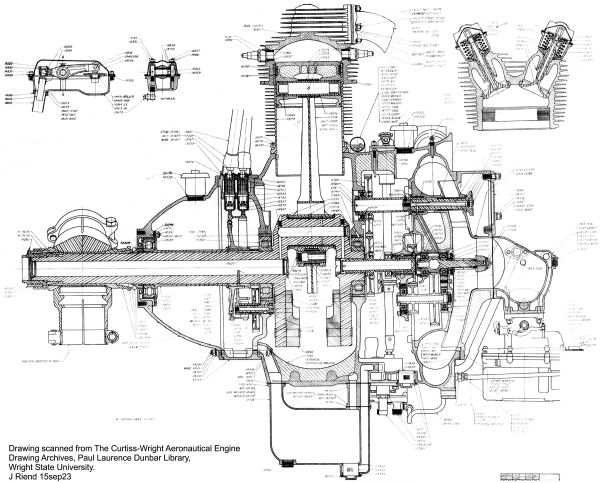 |
| Large Image in Members' Section |
Wright Aviation Engine, Model P-2C
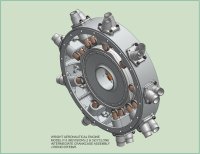 |
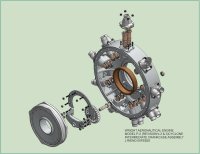 |
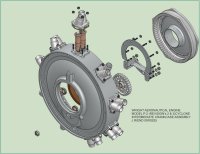 |
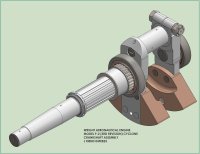 |
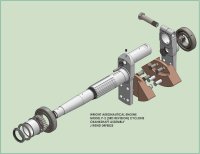 |
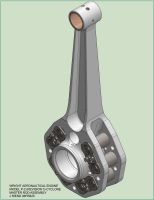 |
 |
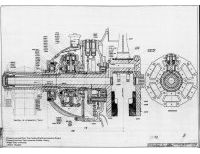 |
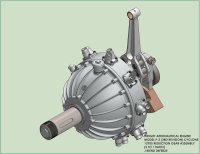 |
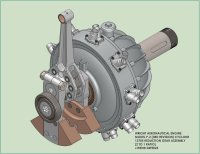 |
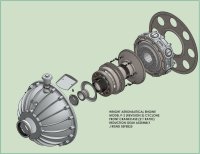 |
 |
| Large Image in Members' Section |
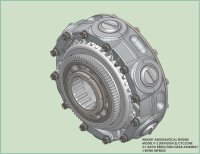 |
 |
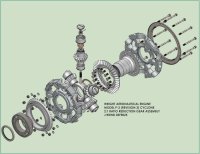 |
 |